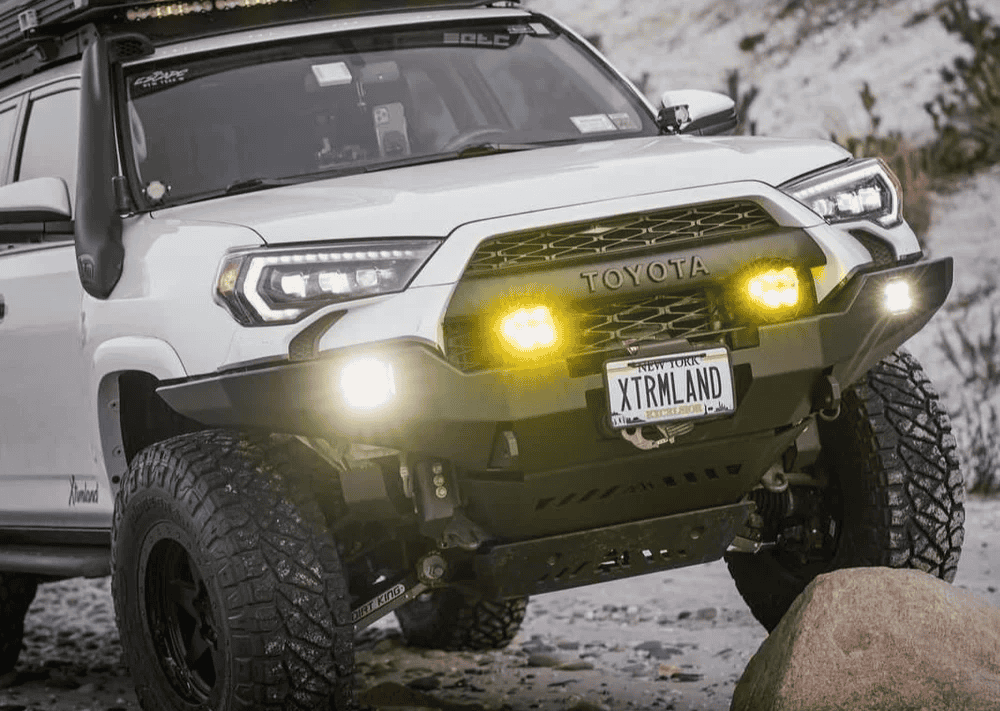Overland Vehicles

The smartest first move is to focus on contact patches and control. Tires determine traction, braking distance, and how the truck behaves on washboard and wet pavement. Choose all terrain tread for mixed travel or a more aggressive pattern only if you spend significant time in deep mud or loose rock. Select the correct load range to support real world weight, and size with restraint so your gearing, braking, and fuel range stay predictable.
Suspension upgrades should match measured payload, not hopes. Many trucks only need quality shocks, appropriate spring rates, and fresh bushings to transform control without adding height. A modest lift that preserves factory geometry often drives better than a tall stack of parts. Finish this stage with an alignment and a torque check on every fastener touched.
Pick a tire that fits within the fender and allows full steering lock under compression. Larger diameter increases effective gearing and can sap power, so if you upsize, plan for it elsewhere. Choose wheels with hub centric fitment and sensible offset to avoid rubbing and stressed wheel bearings. The right tire pressure matters as much as the tire itself, so learn cold pressures for pavement and how low you can safely air down off road with your tire construction.
Add what you actually carry, then weigh the truck at each axle. With numbers in hand, match front and rear spring rates to that load, then choose dampers designed for heat control on corrugated roads. Keep ride height close to stock plus a small bump for clearance, and avoid stacking spacers. An honest setup will track straight, resist porpoising, and reduce fatigue on long days.
Bigger tires increase rotational mass. If stopping distances grow, consider high friction pads and quality rotors before chasing big brake kits. For significant tire upsizing or frequent mountain travel, shorter differential gears can restore throttle response and proper shift points. This is not a first step for most trucks but should be planned early to avoid chasing symptoms.
Armor is insurance, not a costume. Start where contact is likely for your local trails. Skid protection for the oil pan and transmission often prevents a day ending puncture. Rock sliders protect sills and doors on tight ledges and can serve as a secure jack point. Recovery rated front and rear points let you use a soft shackle without drama.
A front bumper and winch are valuable when you travel solo in remote country, but they add weight to the nose that affects handling and spring choice. If you run a winch, plan an appropriate electrical path, fusing, and synthetic line to save weight. In snow or mud zones, a lightweight rear bumper with a high clearance profile may provide more real utility than a full swing out system.
Carry a kinetic rope sized for your truck, two soft shackles, a tree saver, and rated hitch recovery point. Traction boards shine in sand and snow, while a compact shovel solves more problems than most gadgets. Onboard air is worth its space for tire management and quick repairs. Store these items low and near the center of the truck to keep handling crisp.
Electrical upgrades come after the truck rides and stops correctly. A simple power system with a dedicated house battery, a smart charger, and fused circuits will run a fridge, lights, and comms without touching the starting battery. Manage loads through a clean distribution point so troubleshooting never ruins a weekend.
Lighting should improve what you can see without blinding others. Aim fogs low for bad weather, use a focused driving pattern for rural highways, and keep a wide beam for slow technical work. For communication, a handheld radio is a start, but a mobile unit with an external antenna extends reach in remote valleys. Round out your setup with a first aid kit you know how to use, a fire extinguisher within reach, and tire repair gear next to the jack.
As your system grows, revisit weight and balance. Keep heavy items between the axles and below the window line. Each addition should earn its place by solving a real problem you face often, not a hypothetical scenario.
Ready to build smart, not heavy? If you want a balanced plan that prioritizes ride, control, and reliability, explore overland rigs designed around real travel, not trends. When you are ready to map payload and tune suspension, our custom overland upfit process aligns tire choice, spring rates, power integration, and protection in one coherent package. Curious about our approach and handoff experience, including thoughtful orientation and travel ready delivery, see why choose OZK Customs.
Tell us where you travel, what you carry, and how you drive. We will turn that into a first phase upgrade plan that feels right on pavement and stays composed when the trail turns rough.
Want a build plan that rides right on highway and holds its line on rutted climbs? Our team will map your payload, tune suspension, integrate power, and deliver a balanced overland upfit. Share your trip goals and we will engineer the first upgrades that matter most.
ADDRESS:
6159 E Huntsville Rd, Fayetteville, AR 72701
PHONE:
(479) 326-9200
EMAIL:
info@ozkvans.com